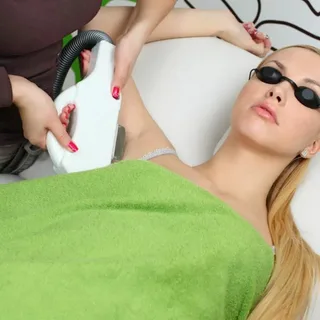Laser hair removal has gained immense popularity in Abu Dhabi as an effective method for achieving long-term hair reduction. While many individuals experience significant benefits from this procedure, it is essential to be aware of the potential side effects. Understanding these side effects can help you make informed decisions and ensure a safe and satisfying experience. This article will discuss the common side effects of Laser hair removal in Abu Dhabi ( إزالة الشعر بالليزر في أبو ظبي ) and provide tips on managing them.
What Is Laser Hair Removal?
Laser hair removal is a cosmetic procedure that uses concentrated light beams to target and destroy hair follicles. By targeting the melanin in the hair, the laser effectively damages the follicle, inhibiting future hair growth. This method is suitable for various body areas, including the face, legs, arms, underarms, and bikini line.
Common Side Effects
While laser hair removal is generally safe, some side effects may occur. The severity and duration of these effects can vary depending on individual skin types, hair colors, and treatment areas. Here are some common side effects:
1. Skin Redness
Description: One of the most common side effects of laser hair removal is temporary redness in the treated area. This occurs due to the laser's heat affecting the skin.
Management: The redness usually subsides within a few hours. To alleviate discomfort, apply a cold compress to the area and avoid exposure to heat sources, such as hot showers or saunas.
2. Swelling
Description: Some individuals may experience slight swelling around the hair follicles post-treatment. This is a normal reaction as the skin responds to the laser's heat.
Management: Swelling typically resolves within a day or two. Applying aloe vera gel or an over-the-counter hydrocortisone cream can help reduce inflammation and soothe the skin.
3. Skin Irritation
Description: Mild irritation, including itching or a burning sensation, may occur after treatment. This is usually temporary and resolves quickly.
Management: Over-the-counter anti-itch creams can help relieve discomfort. Avoid scratching the area to prevent further irritation or potential skin damage.
4. Pigmentation Changes
Description: Some individuals may notice temporary changes in skin pigmentation, particularly in those with darker skin tones. This can manifest as either hyperpigmentation (darkening) or hypopigmentation (lightening) of the skin.
Management: These pigmentation changes often fade within weeks or months. To protect your skin, apply broad-spectrum sunscreen with a high SPF to the treated area, especially when exposed to sunlight.
5. Folliculitis
Description: Folliculitis, or inflammation of the hair follicles, can occur as a side effect of laser hair removal. This is often characterized by small, red bumps resembling acne.
Management: Keeping the area clean and avoiding tight clothing can help reduce the risk of folliculitis. If it persists or worsens, consult your practitioner for advice or treatment options.
6. Scarring
Description: Although rare, scarring can occur, particularly if the skin is not cared for properly post-treatment or if an individual has a history of keloid formation.
Management: To minimize the risk of scarring, follow your practitioner’s aftercare instructions diligently. If you notice any unusual changes in your skin, consult a dermatologist promptly.
Preparing for Laser Hair Removal
To minimize the risk of side effects, proper preparation is crucial. Here are some tips to consider before your laser hair removal session:
- Choose a Reputable Clinic: Select a clinic with experienced practitioners and advanced laser technology. Ensure they assess your skin type and hair color to determine the best treatment approach.
- Avoid Sun Exposure: Refrain from sunbathing or using tanning products for at least two weeks before your appointment to prevent skin irritation.
- Shave the Area: Shave the treatment area 24 hours before your session. Avoid waxing or plucking, as these methods remove hair from the follicle, which the laser targets.
- Discuss Medical History: Be open about your medical history, including any medications or skin conditions. This information will help the practitioner tailor the treatment to your needs.
Post-Treatment Care
Following your treatment, adhere to these post-care tips to minimize side effects and enhance results:
- Avoid Sun Exposure: Protect the treated area from the sun by applying sunscreen with a high SPF. This will help prevent pigmentation changes and skin damage.
- Moisturize: Keep the treated area moisturized to promote healing and reduce irritation.
- Avoid Heat and Sweat: For the first 24-48 hours, avoid hot showers, saunas, and intense workouts to prevent overheating the skin.
- Follow-Up Treatments: Attend all scheduled follow-up sessions to achieve optimal results. Consistency is key to long-lasting hair reduction.
When to Consult a Professional
While most side effects are mild and temporary, it is crucial to know when to seek professional help. Contact your practitioner if you experience:
- Persistent redness or swelling that does not subside within a few days.
- Severe pain or discomfort that worsens over time.
- Signs of infection, such as pus or increased warmth around the treated area.
- Unusual or prolonged changes in skin pigmentation.
Conclusion
Laser hair removal in Abu Dhabi offers an effective solution for long-term hair reduction, but it is essential to be aware of potential side effects. By understanding these common side effects and following proper preparation and aftercare guidelines, you can enhance your experience and achieve smooth, hair-free skin. Always consult a qualified professional to address any concerns and ensure your safety throughout the process. With the right care, you can enjoy the benefits of laser hair removal while minimizing the risk of adverse effects.





Comments